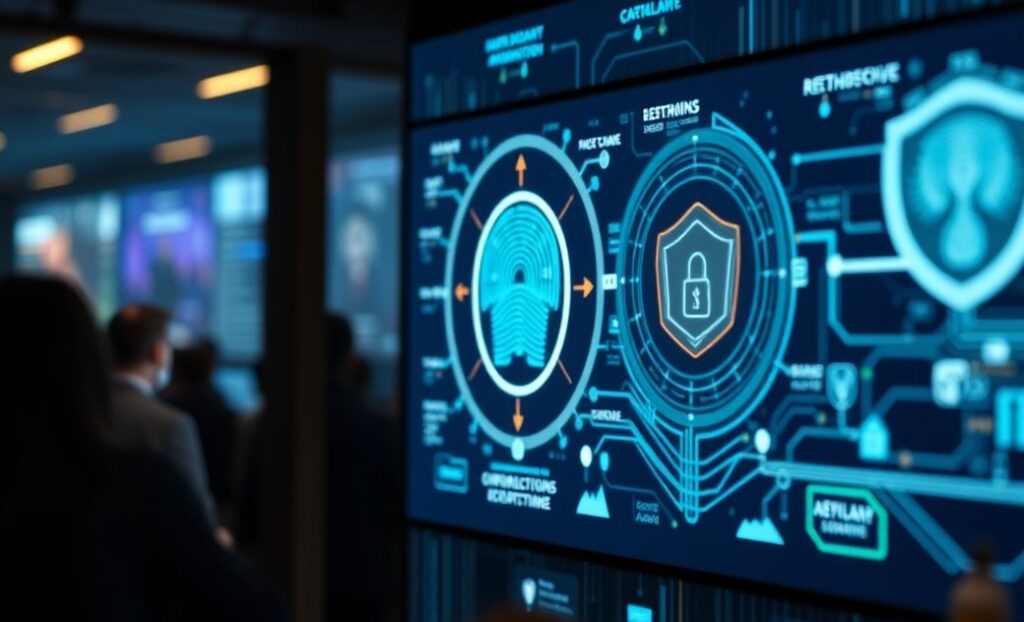In the rapidly evolving digital landscape, cybersecurity has become a paramount concern for individuals and organizations alike. With the increasing sophistication of cyber threats, the need for more robust security measures is evident. Enter biometric authentication, a technology that is transforming the way we secure sensitive data and systems. As we look to the future, biometric authentication is poised to play a pivotal role in the realm of cybersecurity.
Understanding Biometric Authentication
Biometric authentication involves using unique biological characteristics to verify individual identities. Common biometrics include fingerprints, facial recognition, iris scans, and voice recognition. Unlike traditional authentication methods such as passwords, which can be easily forgotten, stolen, or duplicated, biometrics offers a more secure and convenient alternative.
The Advantages of Biometric Authentication
One of the most significant advantages of biometric authentication is its ability to provide a higher level of security. Since biometric traits are uniquely tied to individuals, they are difficult to replicate or forge. This makes it challenging for unauthorized users to gain access, thus enhancing security.
Moreover, biometric systems offer a seamless and user-friendly experience. Users no longer need to remember complex passwords or carry physical tokens. The quick and convenient nature of biometric authentication is becoming increasingly important in our fast-paced world, where efficiency is highly valued.
The Role of Biometrics in Cybersecurity
Biometric authentication is being integrated into various cybersecurity applications to safeguard data and enhance user convenience. Here are some areas where biometrics is making a significant impact:
Financial Services
In the financial sector, biometric authentication is being used to bolster security for transactions and account access. Banks and financial institutions are integrating biometrics into mobile banking apps, allowing users to verify their identity through fingerprint or facial recognition. This reduces the risk of financial fraud and unauthorized access.
Healthcare
Healthcare organizations are adopting biometric authentication to protect sensitive patient data. By employing biometrics, hospitals and clinics can ensure that only authorized personnel can access medical records, thereby enhancing the privacy and security of patient information.
Access Control Systems
Biometric authentication is revolutionizing access control systems in various sectors. From secure government facilities to private corporate environments, biometric access controls help monitor and manage entry points, ensuring that only authorized individuals gain access to restricted areas.
Challenges and Future Outlook
While biometric authentication offers numerous benefits, it is not without challenges. Concerns about data privacy and the potential for biometric data breaches are paramount. Unlike passwords, biometric data cannot be easily changed if compromised. As a result, robust security measures and encryption are essential to protect this sensitive information.
Moreover, the accuracy and reliability of biometric systems continue to be scrutinized. Issues such as false positives or negatives can disrupt user experience and compromise security. Therefore, ongoing advancements in technology are crucial to overcoming these limitations.
Looking ahead, the integration of artificial intelligence and machine learning in biometric systems is expected to improve accuracy and efficiency. This will make biometric authentication even more secure and reliable, encouraging broader adoption across various industries.
Conclusion
As digital threats continue to rise, the future of biometric authentication in cybersecurity looks promising. With its ability to provide enhanced security and convenience, biometrics is set to become a critical component of modern cybersecurity strategies. However, careful consideration and continual advancements are necessary to address the challenges and fully unlock the potential of this transformative technology. By doing so, we can pave the way for a safer and more secure digital world.
